Résultats de recherche de titre
Articles 1492261 à 1492280 sur 1498777
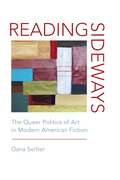
Reading Sideways: The Queer Politics of Art in Modern American Fiction
Par Dana Seitler. 2019
Reading Sideways explores the pivotal role that various art forms played in American literary fiction in direct relation to the…
politics of gender and sexuality in works of modern American literature. It tracks the crosswise circulation of aesthetic ideas in fiction and argues that at stake in the aesthetic turn of these works was not only the theorization of aesthetic experience but also an engagement with political arguments and debates about available modes of sociability and sexual expression. To track these engagements, its author, Dana Seitler, performs a method she calls “lateral reading,” a mode of interpretation that moves horizontally through various historical entanglements and across the fields of the arts to make sense of—and see in a new light—their connections, challenges, and productive frictions. Each chapter takes a different art form as its object: sculpture, portraiture, homecraft, and opera. These art forms appear in some of the major works of literature of the period central to negotiations of gender, race, and sexuality, including those by Henry James, Davis, Willa Cather, Du Bois, Sarah Orne Jewett, and Mary Wilkins Freeman. But the literary texts that each chapter of this book takes as its motivation not only include a specific art form or object as central to its politics, they also build an alternative aesthetic vocabulary through which they seek to alter, challenge, or participate in the making of social and sexual life. By cultivating a counter-aesthetics of the unfinished, the uncertain, the small, the low, and the allusive, these fictions recognize other ways of knowing and being than those oriented toward reductively gendered accounts of beauty, classed imperatives established by the norms of taste, or apolitical treatises of sexual disinterestedness. And within them—and through “reading sideways”—we can witness the coming-into-legibility of a set of diffuse practices that provide a pivot point for engaging the political methods of minoritized subjects at the turn of the twentieth century.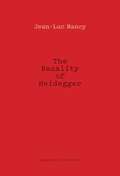
The Banality of Heidegger
Par Jean-Luc Nancy. 2017
Heidegger and Nazism: Ever since the philosopher’s public involvement in state politics in 1933, his name has necessarily been a…
part of this unsavory couple. After the publication in 2014 of the private Black Notebooks, it is now unambiguously part of another: Heidegger and anti-Semitism.What do we learn from analyzing the anti-Semitism of these private writings, together with its sources and grounds, not only for Heidegger’s thought, but for the history of the West in which this thought is embedded? Jean-Luc Nancy poses these questions with the depth and rigor we would expect from him. In doing so, he does not go lightly on Heidegger, in whom he finds a philosophical and “historial” anti-Semitism, outlining a clash of “peoples” that must at all costs arrive at “another beginning.” If Heidegger’s uncritical acceptance of prejudices and long-debunked myths about “world Jewry” shares in the “banality” evoked by Hannah Arendt, this does nothing to lessen the charge. Nancy’s purpose, however, is not simply to condemn Heidegger but rather to invite us to think something to which the thinker of being remained blind: anti-Semitism as a self-hatred haunting the history of the West—and of Christianity in its drive toward an auto-foundation that would leave behind its origins in Judaism.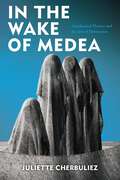
In the Wake of Medea: Neoclassical Theater and the Arts of Destruction
Par Juliette Cherbuliez. 2020
In the Wake of Medea examines the violence of seventeenth-century French political dramas. French tragedy has traditionally been taken to…
be a passionless, cerebral genre that refused all forms of violence. This book explores the rhetorical, literary, and performance strategies through which violence persists, contextualizing it in a longer literary and philosophical history from Ovid to Pasolini.The mythological figure of Medea, foreigner who massacres her brother, murders kings, burns down Corinth, and kills her own children, exemplifies the persistence of violence in literature and art. A refugee who is welcomed yet feared, who confirms the social while threatening its integrity, Medea offers an alternative to western philosophy’s ethical paradigm of Antigone. The Medean presence, Cherbuliez shows, offers a model of radically persistent and disruptive outsiderness, both for classical theater and for its wake in literary theory.In the Wake of Medea explores a range of artistic strategies integrating violence into drama, from rhetorical devices like ekphrasis to dramaturgical mechanisms like machinery, all of which involve temporal disruption. The full range of this Medean presence is explored in treatments of the character Medea and in works figuratively invoking a Medean presence, from the well-known tragedies of Racine and Corneille through a range of other neoclassical political theater, including spectacular machine plays, Neo-Stoic parables, didactic Christian theater. In the Wake of Medea recognizes the violence within these tragedies to explain why violence remains so integral to literature and arts today.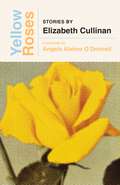
Yellow Roses
Par Elizabeth Cullinan. 2024
One of SLATE Magazine's 15 Best Literary Rediscoveries of 2024A captivating collection unveiling the intricacies of love, life, and legacyThese…
twelve stories, told from the viewpoint of young women in life’s mid-passage, explore the splendors and miseries of love, both carnal and spiritual, and cast back through sickness and health to the engraving experiences of childhood and forward to the rituals and release of death and its occasion for recall.They tell us of a dutiful but not guiltless daughter faced with the wreckage a father has made of his life, of the pain of trying to steer steadily through a doomed affair with a dearly loved married man, and of the ironies attending the funeral of a priest uncle and the birthday of an aged mother.From the outwardly unremarkable frame of a single day—on Fire Island or in New York—an entire life and an encompassment of humanity are movingly conveyed. Then, with inverted telescope, the most subjective of inner realms is explored—through a hospital stay, a sudden name change, or the surprising end of all those dreaded piano lessons.Taken together, these stories are a far greater whole than the sum of their remarkable parts, an unforgettable exploration of the paradoxical toughness and vulnerability that define the mortal condition.
Astrobiology is changing how we understand meaningful human existence. Living with Tiny Aliens seeks to imagine how an individuals’ meaningful…
existence persists when we are planetary creatures situated in deep time—not only on a blue planet burgeoning with life, but in a cosmos pregnant with living-possibilities. In doing so, it works to articulate an astrobiological humanities.Working with a series of specific examples drawn from the study of extraterrestrial life, doctrinal reflection on the imago Dei, and reflections on the Anthropocene, Pryor reframes how human beings meaningfully dwell in the world and belong to it. To take seriously the geological significance of human agency is to understand the Earth as not only a living planet but an artful one. Consequently, Pryor reframes the imago Dei, rendering it a planetary system that opens up new possibilities for the flourishing of all creation by fostering technobiogeochemical cycles not subject to runaway, positive feedback. Such an account ensures the imago Dei is not something any one of us possesses, but that it is a symbol for what we live into together as a species in intra-action with the wider habitable environment.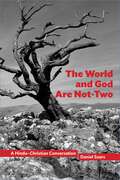
The World and God Are Not-Two is a book about how the God in whom Christians believe ought to be…
understood. The key conceptual argument that runs throughout is that the distinctive relation between the world and God in Christian theology is best understood as a non-dualistic one. The “two”—“God” and “World” cannot be added up as separate, enumerable realities or contrasted with each other against some common background because God does not belong in any category and creatures are ontologically constituted by their relation to the Creator.In exploring the unique character of this distinctive relation, Soars turns to Sara Grant’s work on the Hindu tradition of Advaita Vedānta and the metaphysics of creation found in Thomas Aquinas. He develops Grant’s work and that of the earlier Calcutta School by drawing explicit attention to the Neoplatonic themes in Aquinas that provide some of the most fruitful areas for comparative engagement with Vedānta. To the Christian, the fact that the world exists only as dependent on God means that “world” and “God” must be ontologically distinct because God’s existence does not depend on the world. To the Advaitin, this simultaneously means that “World” and “God” cannot be ontologically separate either. The language of non-duality allows us to see that both positions can be held coherently together without entailing any contradiction or disagreement at the level of fundamental ontology. What it means to be “world” does not and cannot exclude what it means to be “God.”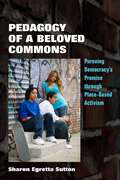
A rare and powerful illustration of what it takes to become a sustainable, community-embedded organization that continually grows the next…
generation of compassionate leaders.This essential, timely book meets us at our current moment of crisis to offer hope that American democracy’s stalled trajectory toward its founding creed to embrace all, and not just some, can indeed be re-invigorated. Pedagogy of a Beloved Commons is about low-income youth of color working within justice-oriented, community-based organizations to improve the social and spatial conditions in their surroundings. It draws from hundreds of pages of data, some collected over a decade ago by graduate research assistants at three universities and some collected recently by a graduate research assistant at a fourth university, to present verbatim quotes from interviews with constituents of three youth-serving organizations. The book posits that the disinvested neighborhoods where youth experience abandonment and marginality in fact can serve as a call to action, given appropriate organizational support.Pedagogy of a Beloved Commons envisions a place-based critical pedagogy that can provide young people with the practical skills and deep values to engage with today’s economic, racial, and ecological crises. It offers a welcome antidote to a neoliberal education system that has not only veered away from its public mandate to advance democratic citizenship but that has also reinforced today’s insidious economic inequality, rendering illusive the idea that rich and poor can work together toward a common good. Between these pages resonates a passionate call for an approach to cultivating citizens who have the critical skills to challenge injustice, the courage to hold the rich and powerful accountable, and the empathy to advance not just their own self-interest but also the health and well-being of their communities and the planet. The author proposes that such citizens develop by exercising collective agency in “the commons,” a political and psychic space whose values are mapped out in physical space. Through the expert use of an architect’s lens, this groundbreaking book argues that the three-dimensional concreteness of the nation’s disinvested neighborhoods provides a virtual stage where disenfranchised youth can experiment with collective life, become more discerning about the forces that have shaped their communities, and practice working toward just and inclusive futures.Merging Paolo Freire’s seminal theory of critical pedagogy with Grace Lee Boggs’s belief that hands-on community-building can disrupt the ever more destructive forces of neoliberal capitalism, Pedagogy of a Beloved Commons refines an aspirational framework for a pathway forward through a careful analysis of three exemplar organizations. It offers rich, unique portraits of young people transforming their communities in southwest Detroit, Wai’anae, and Harlem, respectively illustrating place-based activism through theater, organic farming, and critical inquiry. Here activism is framed as the hands-on engagement of youth in addressing inequities in the commons of their neighborhoods through small but persistent interventions that also help them learn the language of solidarity and collectivity that a sustainable democracy needs. Pedagogy of a Beloved Commons is a must-read for our times and for our future.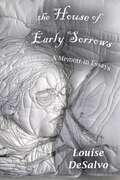
The House of Early Sorrows: A Memoir in Essays
Par Louise DeSalvo. 2017
WINNER OF THE IASA BOOK AWARD!AMERICAN BOOK AWARD WINNER!As the child of children of immigrants, Louise DeSalvo was at first…
reluctant to write about her truths. Her abusive father, her sister’s suicide, her illness. In this stunning collection of her captivating and frank essays on her life and her Italian-American culture, Louise DeSalvo centers on her beginnings, reframing and revising her acclaimed memoiristic essays, pieces that were the seeds of longer collections, to reveal her true power as a memoirist: the ability to dig ever deeper for personal and political truths that illuminate what it means to be a woman, a second-generation American, a writer, and a scholar. Each essay is driven by a complex inquiry that examines the personal, familial, social, ethnic, and historical dimensions of identity. Collectively, they constitute a story significantly different from DeSalvo’s memoirs when they first published, where the starkness of their meaning became blunted by material surrounding them. DeSalvo has also restored material written and then deleted—experiences she was too reticent to reveal before, in writing about her sister’s suicide, her husband’s adultery, her own sexual assault. The essays also include new material to shift the ballast of an essay as her life has changed significantly through the years. The House of Early Sorrows is a courageous exploration not only of the DeSalvo’s family life and times, but also of our own.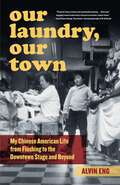
With humor and grace, the memoir of a first-generation Chinese American in New York City.Our Laundry, Our Town is a…
memoir that decodes and processes the fractured urban oracle bones of Alvin Eng’s upbringing in Flushing, Queens, in the 1970s. Back then, his family was one of the few immigrant Chinese families in a far-flung neighborhood in New York City. His parents had an arranged marriage and ran a Chinese hand laundry. From behind the counter of his parents’ laundry and within the confines of a household that was rooted in a different century and culture, he sought to reconcile this insular home life with the turbulent yet inspiring street life that was all around them––from the faux martial arts of TV’s Kung Fu to the burgeoning underworld of the punk rock scene.In the 1970s, NYC, like most of the world, was in the throes of regenerating itself in the wake of major social and cultural changes resulting from the counterculture and civil rights movements. And by the 1980s, Flushing had become NYC’s second Chinatown. But Eng remained one of the neighborhood’s few Chinese citizens who did not speak fluent Chinese. Finding his way in the downtown theater and performance world of Manhattan, he discovered the under-chronicled Chinese influence on Thornton Wilder’s foundational Americana drama, Our Town. This discovery became the unlikely catalyst for a psyche-healing pilgrimage to Hong Kong and Guangzhou, China—his ancestral home in southern China—that led to writing and performing his successful autobiographical monologue, The Last Emperor of Flushing. Learning to tell his own story on stages around the world was what proudly made him whole.As cities, classrooms, cultures, and communities the world over continue to re-examine the parameters of diversity, equity, and inclusion, Our Laundry, Our Town will reverberate with a broad readership.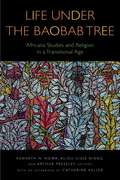
Life Under the Baobab Tree: Africana Studies and Religion in a Transitional Age (Transdisciplinary Theological Colloquia)
Par Kenneth N. Ngwa, Aliou Cissé Niang, and Arthur Pressley. 2023
Life Under the Baobab Tree: Africana Studies and Religion in a Transitional Age is a compendium of innovating essays meticulously…
written by early and later diaspora people of African descent. Their speech arises from the depth of their experiences under the Baobab tree and offers to the world voices of resilience, newness/resurrection, hope, and life. Resolutely journeying on the trails of their ancestors, they speak about setbacks and forward-looking movements of liberation, social transformation, and community formation. The volume is a carefully woven conversation of intellectual substance and structure across time, space, and spirituality that is quintessentially “Africana” in its centering of methodological, theoretical, epistemological, and hermeneutical complexity that assumes nonlinear and dialogical approaches to developing liberating epistemologies in the face of imperialism, colonialism, racism, and religious intolerance.A critical part of this conversation is a reconceptualization and reconfiguration of the concept of religion in its colonial and imperial forms. Life Under the Baobab Tree examines how Africana peoples understand their corporate experiences of the divine not as “religion” apart from its intimate connections to social realities of communal health, economics, culture, politics, environment, violence, war, and dynamic community belonging. To that end Afro-Pessimistic formulations of life placed in dialogic relation Afro-Optimism. Both realities constitute life under the Baobab tree and represent the sturdiness and variation that anchors the deep ruptures that have affected Africana life and the creative responses. The metaphor and substance of the tree resists reductionist, essentialist, and assured conclusions about the nature of diasporic lived experiences, both within the continent of Africa and in the African Diaspora.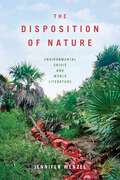
The Disposition of Nature: Environmental Crisis and World Literature
Par Jennifer Wenzel. 2020
Finalist, 2022 Ecocriticism Book Prize, Association for the Study of Literature and the EnvironmentShortlisted, 2020 Book Prize, Association for the…
Study of the Arts of the PresentHow do literature and other cultural forms shape how we imagine the planet, for better or worse? In this rich, original, and long awaited book, Jennifer Wenzel tackles the formal innovations, rhetorical appeals, and sociological imbrications of world literature that might help us confront unevenly distributed environmental crises, including global warming.The Disposition of Nature argues that assumptions about what nature is are at stake in conflicts over how it is inhabited or used. Both environmental discourse and world literature scholarship tend to confuse parts and wholes. Working with writing and film from Africa, South Asia, and beyond, Wenzel takes a contrapuntal approach to sites and subjects dispersed across space and time. Reading for the planet, Wenzel shows, means reading from near to there: across experiential divides, between specific sites, at more than one scale.Impressive in its disciplinary breadth, Wenzel’s book fuses insights from political ecology, geography, anthropology, history, and law, while drawing on active debates between postcolonial theory and world literature, as well as scholarship on the Anthropocene and the material turn. In doing so, the book shows the importance of the literary to environmental thought and practice, elaborating how a supple understanding of cultural imagination and narrative logics can foster more robust accounts of global inequality and energize movements for justice and livable futures.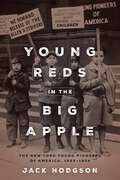
Young Reds in the Big Apple: The New York Young Pioneers of America, 1923-1934
Par Jack Hodgson. 2025
The tale of New York’s Young Reds—a riveting journey through the YPA’s rise and influenceYoung Reds in the Big Apple:…
The New York YPA, 1923–1934 by Jack Hodgson is a compelling historical account that delves into the heart of American communism through the lens of New York City’s Young Pioneers of America (YPA). This meticulously researched book sheds light on a neglected aspect of American history, revealing the intricate details of the YPA’s formation, ideologies, and activities from 1923 to 1934.Hodgson illustrates the YPA’s journey, from its early days as a branch of the Communist Party USA, intended for youth aged 8–16, to its eventual disbandment. The book explores the organization’s unique structure, ethos, and activities, showcasing how it became a formidable force in New York’s political landscape. He vividly portrays the YPA members’ involvement in public protests, education reform, and their bold stance against prevailing social norms, including racial and gender issues.The narrative goes beyond mere historical recounting, offering deep insights into the internal dynamics of the YPA, its relationship with the adult Communist Party, and its interactions with other political entities. Hodgson’s analysis of the YPA’s impact on its young members and the broader community is both insightful and thought-provoking.Young Reds in the Big Apple stands out for its rigorous approach to a controversial subject, avoiding partisanship to provide a balanced view of the YPA’s legacy. This book is not just a historical account; it’s an exploration of youthful activism, political movements, and the complexities of American communism during a pivotal era.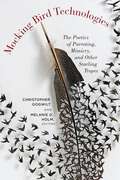
Mocking Bird Technologies: The Poetics of Parroting, Mimicry, and Other Starling Tropes
Par Christopher GoGwilt and Melanie D. Holm. 2018
Contributors: Madeleine Brainerd, Joe Conway, Fraser Easton, Christopher GoGwilt, Shari Goldberg, Melanie D. Holm, Sarah Kay, Kaori T. Kitao, Holt…
V. Meyer, Isabel A. Moore, Fawzia Mustafa, Gavin Sourgen.Mocking Bird Technologies brings together a range of perspectives to offer an extended meditation on bird mimicry in literature: the way birds mimic humans, the way humans mimic birds, and the way mimicry of any kind involves technologies that extend across as well as beyond languages and species. The essays examine the historical, poetic, and semiotic problem of mimesis exemplified both by the imitative behavior of parrots, starlings, and other mocking birds, and by the poetic trope of such birds in a range of literary and philological traditions. Drawing from a cross-section of traditional periods and fields in literary studies (18th-century studies, romantic studies, early American studies, 20th-century studies, and postcolonial studies), the collection offers new models for combining comparative and global studies of literature and culture.EditorsChristopher GoGwilt is Professor of English and Comparative Literature at Fordham University. He is the author of The Passage of Literature: Genealogies of Modernism in Conrad, Rhys, and Pramoedya (Oxford, 2011), The Fiction of Geopolitics: Afterimages of Culture from Wilkie Collins to Alfred Hitchcock (Stanford, 2000), and The Invention of the West: Joseph Conrad and the Double-Mapping of Europe and Empire (Stanford, 1995).Melanie D. Holm is Assistant Professor of the English Department and Graduate Program of Literature and Criticism at Indiana University of Pennsylvania. She also teaches in the university’s Women’s and Gender Studies program. Her scholarly focus is on eighteenth-century literature and skepticism.ContributorsMadeleine Brainerd taught at Washington University in St. Louis and at Excelsior College. Since 2004 she has taught therapeutic yoga and medical qi gong in New York City, at the Integral Yoga Institute, Kenshikai Dojo, Gouverneur Hospital, and other venues. She studies histories of yoga’s intersections with ecological in/justice, animality, and affect theory.Joe Conway is an Assistant Professor of American Literature at the University of Alabama in Huntsville. His articles have appeared or are scheduled to appear in the journals Women’s Studies, Early American Literature, and Nineteenth-Century Contexts. He is currently at work on a monograph about the social life of antebellum money that charts how discourses of noneconomic phenomena such as medicine, race, nationalism, and aesthetics informed nineteenth-century debates about what constitutes good money.Fraser Easton is Associate Professor of English, University of Waterloo, Canada. A specialist in eighteenth-century literature, he has published on Jane Austen, Daniel Defoe, Maria Edgeworth, and Christopher Smart, as well as on newspaper records and historical accounts of passing women in the eighteenth century.Shari Goldberg is Assistant Professor of English at Franklin & Marshall College in Lancaster, Pennsylvania. She is the author of Quiet Testimony: A Theory of Witnessing from Nineteenth-Century American Literature (Fordham, 2013). She has also published essays on silence, politics, and personhood in American literature. Her current research focuses on late-nineteenth-century models of mind and person in narrative and psychological writing.Sarah Kay teaches French and Medieval Studies at New York University. She has written widely on medieval literature across languages, genres, and periods; her work combines the study of medieval texts, especially troubadour songs, with philosophical and theoretical inquiry. Her two most recent books are Parrots and Nightingales: Troubadour Quotations and the Development of European Poetry (2013) and Animal Skins and the Reading Self in Medieval Latin and French Bestiaries (2017).
Empire and Nation: Selected Essays
Par Partha Chatterjee. 2010
Partha Chatterjee is one of the world's greatest living theorists on the political, cultural, and intellectual history of nationalism. Beginning…
in the 1980s, his work, particularly within the context of India, has served as the foundation for subaltern studies, an area of scholarship he continues to develop. In this collection, English-speaking readers are finally able to experience the breadth and substance of Chatterjee's wide-ranging thought. His provocative essays examine the phenomenon of postcolonial democracy and establish the parameters for research in subaltern politics. They include an early engagement with agrarian politics and Chatterjee's brilliant book reviews and journalism. Selections include one never-before-published essay, "A Tribute to the Master," which considers through a mock retelling of an episode from the classic Sanskrit epic,The Mahabharata, a deep dilemma in the study of postcolonial history, and several Bengali essays, now translated into English for the first time. An introduction by Nivedita Menon adds necessary context and depth, critiquing Chatterjee's ideas and their influence on contemporary political thought.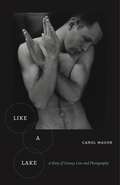
Like a Lake: A Story of Uneasy Love and Photography
Par Carol Mavor. 2020
A vivid, imaginative response to the sensual and erotic in postwar American photography, with attention to the beauty of the…
nude, both male and femaleWhen photographer Coda Gray befriends a family with a special interest in a young boy, the motivation behind his special attention is difficult to grasp, “like water slipping through our fingers.” Can a man innocently love a boy who is not his own?Using fiction to reveal the truths about families, communities, art objects, love, and mourning, Like a Lake tells the story of ten-year-old Nico, who lives with his father (an Italian- American architect) and his mother (a Japanese-American sculptor who learned how to draw while interned during World War II). Set in the 1960s, this is a story of aesthetic perfection waiting to be broken. Nico’s midcentury modern house, with its Italian pottery jars along the outside and its interior lit by Japanese lanterns. The elephant-hide gray, fiberglass reinforced plastic 1951 Eames rocking chair, with metal legs and birch runners. Clam consommé with kombu, giant kelp, yuzu rind, and a little fennel—in each bowl, two clams opened like a pair of butterflies, symbols of the happy couple. Nico’s boyish delight in developing photographs under the red safety light of Coda’s “Floating Zendo”— the darkroom boat that he keeps on Lake Tahoe.The lives of Nico, his parents, and Coda embody northern California’s postwar landscape, giving way to fissures of alternative lifestyles and poetic visions. Author Carol Mavor addresses the sensuality and complexity of a son’s love for his mother and that mother’s own erotic response to it. The relationship between the mother and son is paralleled by what it means for a boy to be a model for a male photographer and to be his muse. Just as water can freeze into snow and ice, melt back into water, and steam, love takes on new forms with shifts of atmosphere. Like a Lake’s haunting images and sensations stay with the reader.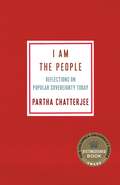
I Am the People: Reflections on Popular Sovereignty Today (Ruth Benedict Book Series)
Par Partha Chatterjee. 2020
The forms of liberal government that emerged after World War II are in the midst of a profound crisis. In…
I Am the People, Partha Chatterjee reconsiders the concept of popular sovereignty in order to explain today’s dramatic outburst of movements claiming to speak for “the people.”To uncover the roots of populism, Chatterjee traces the twentieth-century trajectory of the welfare state and neoliberal reforms. Mobilizing ideals of popular sovereignty and the emotional appeal of nationalism, anticolonial movements ushered in a world of nation-states while liberal democracies in Europe guaranteed social rights to their citizens. But as neoliberal techniques shrank the scope of government, politics gave way to technical administration by experts. Once the state could no longer claim an emotional bond with the people, the ruling bloc lost the consent of the governed. To fill the void, a proliferation of populist leaders have mobilized disaffected groups into a battle that they define as the authentic people against entrenched oligarchy.Once politics enters a spiral of competitive populism, Chatterjee cautions, there is no easy return to pristine liberalism. Only a counter-hegemonic social force that challenges global capital and facilitates the equal participation of all peoples in democratic governance can achieve significant transformation. Drawing on thinkers such as Antonio Gramsci, Michel Foucault, and Ernesto Laclau and with a particular focus on the history of populism in India, I Am the People is a sweeping, theoretically rich account of the origins of today’s tempests.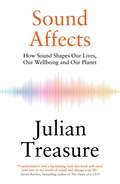
Sound Affects: How Sound Shapes Our Lives, Our Wellbeing and Our Planet
Par Julian Treasure. 2025
'Transformative and a fascinating read; this book will open your ears to the world of sound and change your life'…
Steven Bartlett, bestselling author of The Diary of a CEO'A fascinating insight into the power of sound' Susan Cain, No. 1 New York Times bestselling author of QUIETEvery day, the sounds around us affect every aspect of our human experience, and thus fundamentally alter our quality of life, for better or worse. It is only recently that scientists have realised that sounds connect us to the world in ways that are every bit as vivid and evocative as visual landscapes. Hearing is the first sense we develop, and as our primary warning sense it is hardwired into our brains. And yet, in an increasingly noisy and distracted world, most people pay scant attention to the sounds around them, causing them to lose contact with the essential skill of listening. Sound Affects is about rediscovering the wonder of sound, and understanding how powerfully it affects us, whether we are paying attention or not. It is also a manual for taking back responsibility for the sounds we consume and the sounds we make, so we can enhance our own happiness, effectiveness and well-being.In the process, the reader will discover that:- stars are like bells, ringing with sound black holes make sound 50 octaves below what we can hear - snapping shrimp may be only 1cm long but they make sound that's as loud as a rock concert - whales can communicate underwater over hundreds of miles with very low frequency sound that travels five times as fast as sound in air - individual cells make unique sounds, enabling scientists detect early signs of metastases - dolphins have names and call each other by them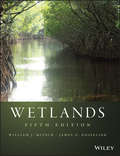
Wetlands: Structure And Function, Management And Methods
Par James G. Gosselink, William J. Mitsch. 2015
The single most important book on wetlands, newly expanded and updated Wetlands is the definitive guide to this fragile ecosystem,…
providing the most comprehensive coverage and in-depth information available in print. Recently updated and expanded, this latest edition contains brand new information on Wetland Ecosystem Services and an updated discussion on Wetland, Carbon, and Climate Change and Wetland Creation and Restoration. Due to popular demand, the authors have brought back five streamlined chapters on wetland ecosystems that had been removed from previous editions, and provided more robust ancillary materials including an online color photo gallery, PowerPoint slides, and several video case studies. As nature's kidneys, wetland ecosystems help the environment process toxins and excess fertilizers and maintain the relative health of our aquatic ecosystems. As the understanding of their importance grows, their management and ecology have gained increased attention and have become an area of professional specialization over the past two decades. This book gives readers a solid understanding of wetlands, how they work, what they do, and why the Earth can't live without them. Understand wetlands' role in the ecosystem, from local to global scales Appreciate the fact that wetlands may be the most logical and economical way to sequester carbon from the atmosphere Discover the unique characteristics that make wetlands critically important for improving water quality, reducing storm and flood damage, and providing habitat to support biodiversity Learn how wetlands are being managed or destroyed around the globe but also how we can create and restore them Examine the ways in which climate change is affecting wetland ecosystems and wetland ecosystems affect climate change Wetlands are crucial to the health of the planet, and we've only begun to realize the magnitude of the damage that has already been done as we scramble to save them. A generation of ecologists, ecological engineers, land use planners, and water resource managers worldwide owe their knowledge of the wetlands to this book – for the next generation to follow in their footsteps, Wetlands 5th edition is the quintessential guide to these critical systems.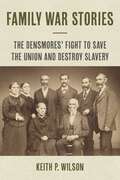
Family War Stories: The Densmores' Fight to Save the Union and Destroy Slavery (The North's Civil War)
Par Keith P. Wilson. 2024
Based on an extensive collection of letters written from the home front and the battlefront, Family War Stories offers fresh…
insights into how the reciprocal nature of family correspondence can shape a family’s understanding of the war.Family War Stories examines the contribution of the Densmore family to the Northern Civil War effort. It extends the boundaries of research in two directions. First, by describing how members of this white family from Minnesota were mobilized to fight a family war on the home front and the battlefront, and second, by exploring how the war challenged the family’s abolitionist beliefs and racial attitudes. Family War Stories argues that the totality of the family’s Civil War experience was intricately shaped by the dynamics of family life and the reciprocal nature of family correspondence. Further, it argues that the serving sons’ understanding of the war was shaped by their direct military experiences in the army camps and battlefields and how their loved ones at home interpreted these experiences.With two sons serving as officers in the United States Colored Troops’ regiments fighting in the Mississippi Valley, the Densmore family was heavily involved in destroying slavery. Family War Stories analyses how the sons’ military experiences tested the family’s abolitionist ideology and its commitment to white racial superiority. It also explains how the family sought to accommodate the presence of a refugee from slavery working in the family kitchen. In some ways, the presence of this worker in the household posed an even greater range of challenges to the family’s racial beliefs than the sons’ military service.By examining one family’s deep involvement in the war against slavery, Wilson analyses how the Civil War posed particular challenges to Northerners committed to abolitionism and white supremacy.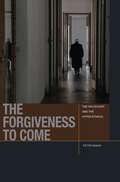
The Forgiveness to Come: The Holocaust and the Hyper-Ethical (Just Ideas)
Par Peter Jason Banki. 2018
This book is concerned with the aporias, or impasses, of forgiveness, especially in relation to the legacy of the crimes…
against humanity perpetrated by the Nazis and their collaborators during World War II. Banki argues that, while forgiveness of the Holocaust is and will remain impossible, we cannot rest upon that impossibility. Rather, the impossibility of forgiveness must be thought in another way. In an epoch of “worldwidization,” we may not be able simply to escape the violence of scenes and rhetoric that repeatedly portray apology, reconciliation, and forgiveness as accomplishable acts. Accompanied by Jacques Derrida’s thought of forgiveness of the unforgivable, and its elaboration in relation to crimes against humanity, the book undertakes close readings of literary, philosophical, and cinematic texts by Simon Wiesenthal, Jean Améry, Vladimir Jankélévitch, Robert Antelme and Eva Mozes Kor. These texts contend with the idea that the crimes of the Nazis are inexpiable, that they lie beyond any possible atonement or repair. Banki argues that the juridical concept of crimes against humanity calls for a thought of forgiveness—one that would not imply closure of the infinite wounds of the past. How could such a forgiveness be thought or dreamed? Banki shows that if today we cannot simply escape the “worldwidization” of forgiveness, then it is necessary to rethink what forgiveness is, the conditions under which it supposedly takes place, and especially its relation to justice.